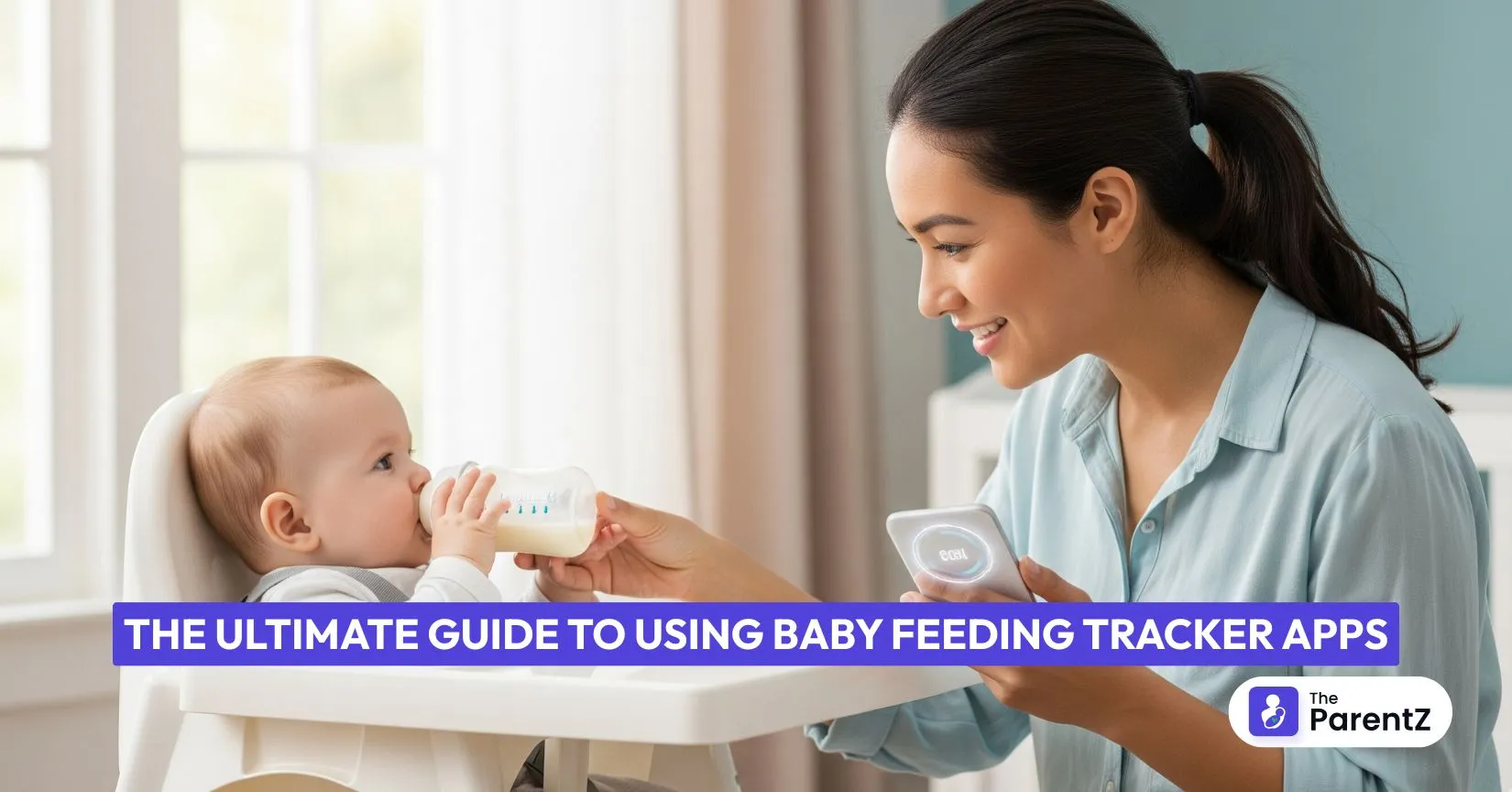Being a new parent feels overwhelming, especially when you're trying to figure out if your baby is eating enough, sleeping well, or developing normally. You might find yourself asking: "When did I last feed them? How much did they eat? Are they getting enough nutrition?" This is where baby feeding tracker apps become your lifesaver.
What Are Baby Feeding Tracker Apps?
Baby feeding tracker apps are digital tools that help parents monitor their child's feeding patterns, growth, and daily activities. Think of them as your personal baby care assistant that never forgets anything. These apps record everything from breastfeeding sessions to formula amounts, diaper changes, and sleep patterns.
The reason these apps exist is simple: babies can't tell you when they're hungry, how much they ate, or if they're developing properly. New parents often feel lost in the chaos of feeding schedules, and these apps provide structure and peace of mind.
Why Every Parent Needs a Feeding Tracker
Before exploring how to use these apps, let's understand why they're important. Newborns feed 8-12 times per day, and keeping track mentally becomes impossible when you're sleep-deprived. Without tracking, you might overfeed, underfeed, or miss important patterns that indicate health issues.
Pediatricians often ask about feeding frequency, amounts, and timing during checkups. Having accurate data helps them assess your baby's growth and development properly. Additionally, if multiple caregivers are involved (partners, grandparents, nannies), everyone needs to stay informed about the baby's routine.
Getting Started: Setting Up Your App
Step 1: Choose the Right App
Look for apps that cover comprehensive tracking features. Apps like TheParentZ Child Health and Growth Tracker App offer infant tracking that includes feeding logs for breast, bottle, or solids, diaper change monitoring, and caregiver synchronization.
Step 2: Input Basic Information
Enter your baby's birth date, weight, and feeding method (breastfeeding, formula, or combination). This baseline helps the app provide personalized recommendations and growth tracking.
Step 3: Understand the Interface
Familiarize yourself with the main features: feeding logs, diaper tracking, sleep monitoring, and growth charts. Most apps have simple, one-tap logging systems designed for tired parents.
Tracking Different Feeding Methods
Breastfeeding Tracking
When breastfeeding, track which breast you started with, duration on each side, and time of feeding. This information helps ensure balanced milk production and identifies any supply issues early.
Common Challenge: Many mothers worry about milk supply adequacy. The app helps by showing feeding frequency and duration patterns, giving you concrete data to discuss with lactation consultants.
What to Track:
- Start time and duration
- Which breast (left/right)
- Baby's satisfaction level after feeding
- Any pain or discomfort experienced
Formula Feeding Tracking
For formula feeding, record the amount consumed, time of feeding, and any leftover formula. This helps you understand your baby's appetite patterns and adjust preparation accordingly.
Key Tracking Points:
- Amount offered vs. consumed
- Formula type and preparation ratio
- Feeding duration
- Any spit-up or digestive issues
Solid Food Introduction
When starting solids (usually around 6 months), track new foods introduced, quantities consumed, and any allergic reactions. This creates a valuable record for identifying food sensitivities.
Important Elements:
- Food type and quantity
- Baby's reaction and acceptance
- Time of meal
- Any adverse reactions
Common Mistakes Parents Make
Mistake 1: Inconsistent Logging
Many parents start enthusiastically but become inconsistent. The solution is setting reminders and making logging part of your feeding routine. Apps with reminder features help maintain consistency.
Mistake 2: Over-Analyzing Data
While tracking is important, obsessing over every detail can increase anxiety. Use the data as a guide, not a rigid rule. Every baby is unique, and patterns may vary.
Mistake 3: Not Sharing Access
Forgetting to sync data with other caregivers creates confusion. Ensure all caregivers have access to the same tracking information.
Mistake 4: Ignoring Growth Patterns
Some parents focus only on daily data and miss longer-term trends. Review weekly and monthly patterns to understand your baby's development better.
Making Your Tracking Journey Successful
- Establish a Routine: Make logging as automatic as diaper changing. Keep your phone handy during feedings, and log immediately after each session while details are fresh.
- Use Reminders Wisely: Set up feeding reminders, especially for newborns who need regular feeding intervals. However, remember that these are guides, so respond to your baby's cues first.
- Review Regularly: Weekly reviews help identify patterns and potential issues. Look for changes in appetite, feeding duration, or frequency that might indicate growth spurts or health concerns.
- Communicate with Healthcare Providers: Share your tracking data during pediatric visits. Many apps allow you to export reports, making it easier to discuss your baby's patterns with doctors.
Frequently Asked Questions
- How accurate do I need to be with timing? Approximate timing is fine. The goal is identifying patterns, not creating stress over exact minutes.
- What if I forget to log a feeding? Most apps allow you to add entries retroactively. Don't stress about missed entries – consistency over time matters more than perfection.
- Should I track everything or just feeding? Start with feeding and add other elements gradually. Comprehensive tracking (including diapers and sleep) provides a complete picture of your baby's health.
- When can I stop using the app? Many parents continue tracking through the first year, especially during major transitions like introducing solids or weaning.
Conclusion
Baby feeding tracker apps transform the overwhelming task of monitoring your infant's needs into a manageable, informative process. They provide structure during chaotic early parenting days and create valuable records for healthcare discussions.
Remember, these apps are tools to support your parenting journey, not replace your instincts. Trust your baby's cues while using the data to make informed decisions about their care and development.
The key to success lies in consistent use, regular review, and maintaining perspective. Your baby's feeding journey is unique, and these apps help you navigate it with confidence and peace of mind.









Be the first one to comment on this story.